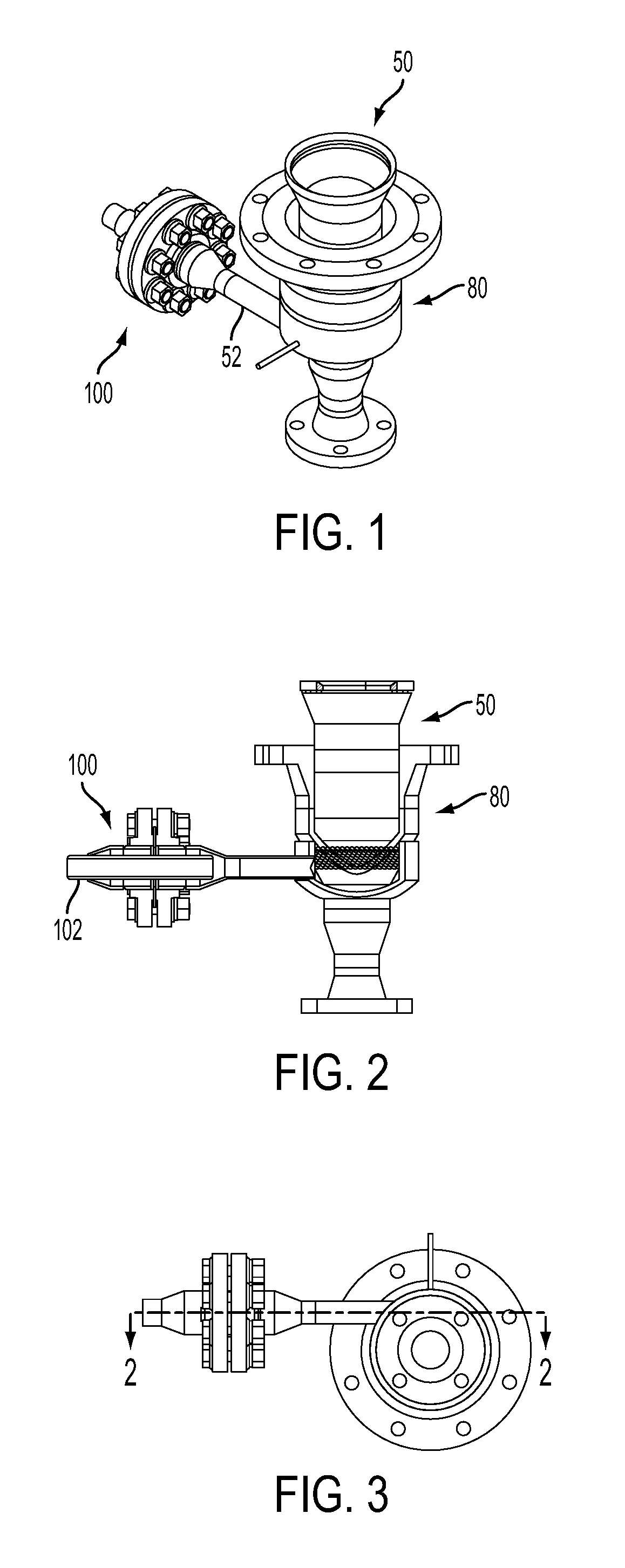Joint with heat-shielding element
a technology of heat shielding element and joint, which is applied in the direction of fluid pressure sealing joints, sleeve/socket joints, mechanical equipment, etc., can solve the problems of affecting the service life of the joint, so as to facilitate convective heat transfer, minimize the exposure of the flange, and facilitate the effect of convective heat transfer
- Summary
- Abstract
- Description
- Claims
- Application Information
AI Technical Summary
Benefits of technology
Problems solved by technology
Method used
Image
Examples
Embodiment Construction
[0028]Several preferred embodiments of the present invention are described for illustrative purposes, it being understood that the invention may be embodied in other forms not specifically shown in the drawings. The figures will be described with respect to the structure and functions that achieve one or more of the objects of the invention and / or receive the benefits derived from the advantages of the invention as understood by persons skilled in the art or explicitly set forth herein.
[0029]Turning first to FIG. 1, shown therein is perspective view diagram of a heat-shielded pipe joint 100 according to the present invention, for connecting pipe sections, and is shown attached to a discharge assembly 50. For purposes of this description, the discharge assembly 50 essentially describes an apparatus inside a flange section 80. Also for purpose of this description, the pipe joint 100 (hereinafter “joint”) essentially describes an apparatus that includes a butt joint between the ends of...
PUM
 Login to View More
Login to View More Abstract
Description
Claims
Application Information
 Login to View More
Login to View More - R&D
- Intellectual Property
- Life Sciences
- Materials
- Tech Scout
- Unparalleled Data Quality
- Higher Quality Content
- 60% Fewer Hallucinations
Browse by: Latest US Patents, China's latest patents, Technical Efficacy Thesaurus, Application Domain, Technology Topic, Popular Technical Reports.
© 2025 PatSnap. All rights reserved.Legal|Privacy policy|Modern Slavery Act Transparency Statement|Sitemap|About US| Contact US: help@patsnap.com



